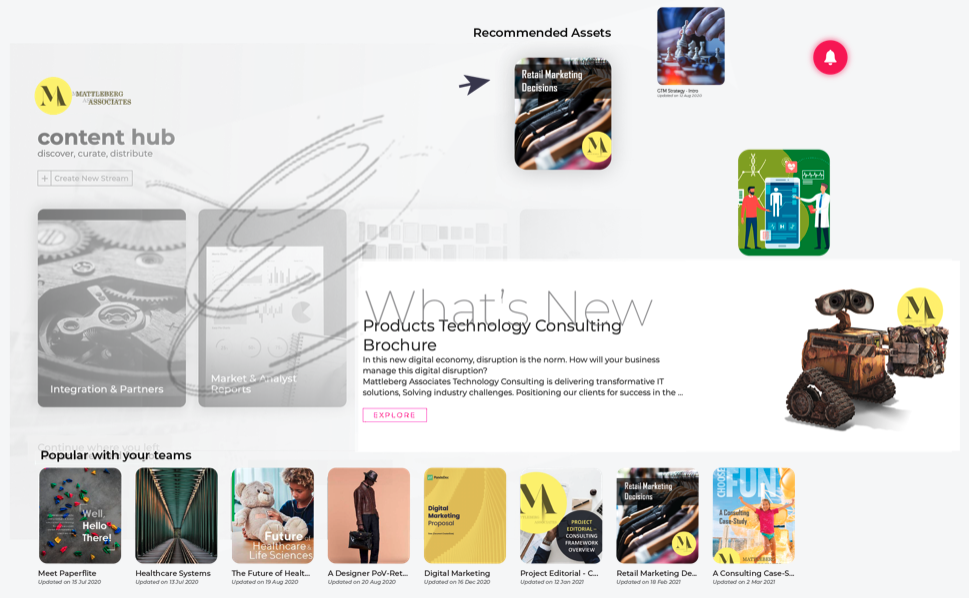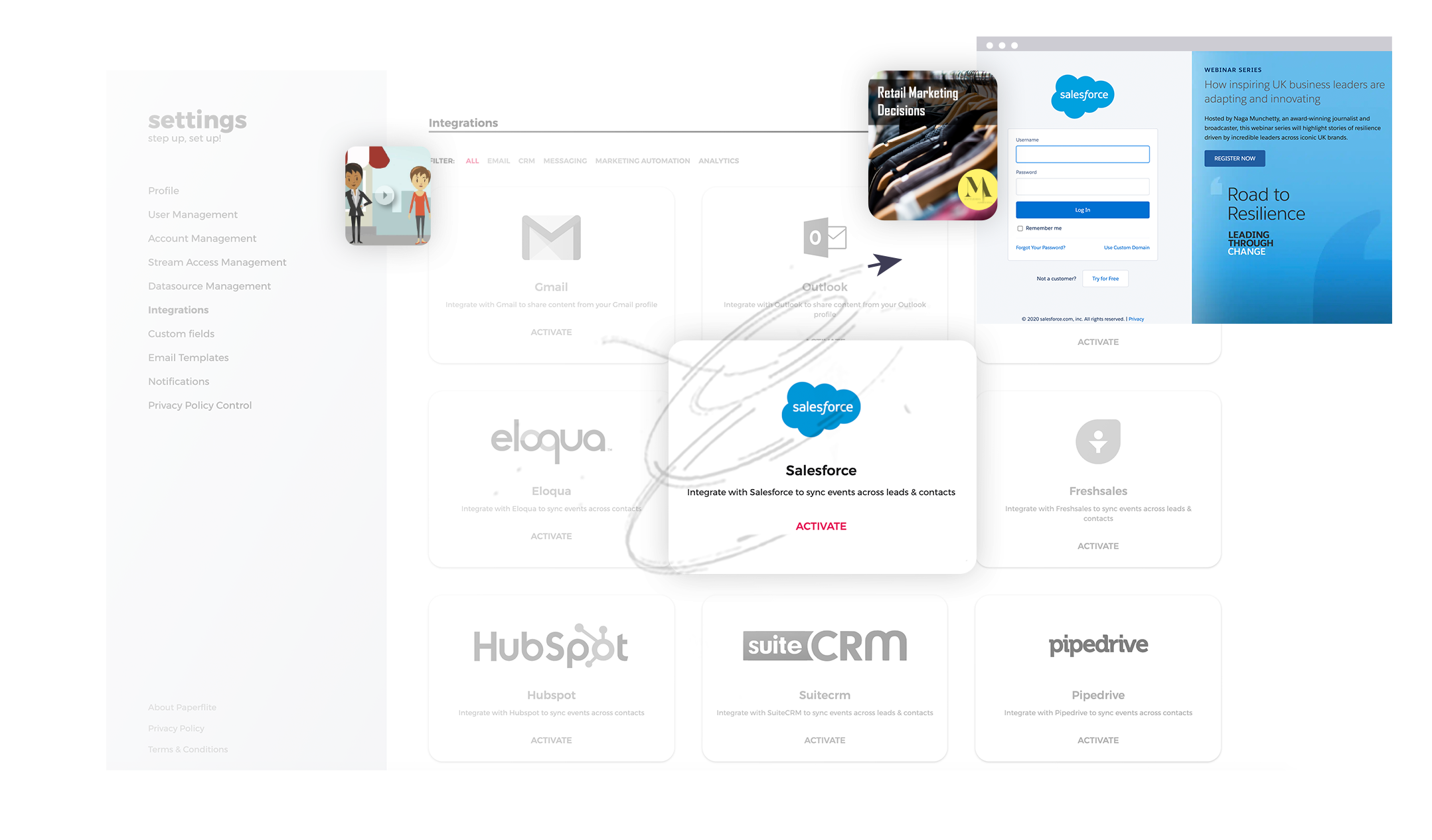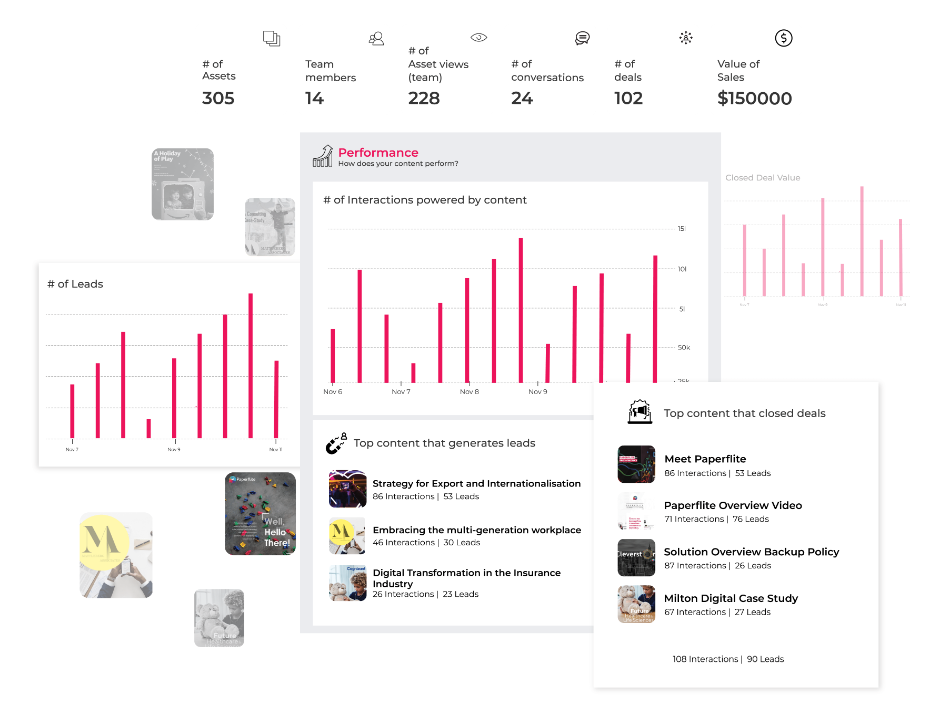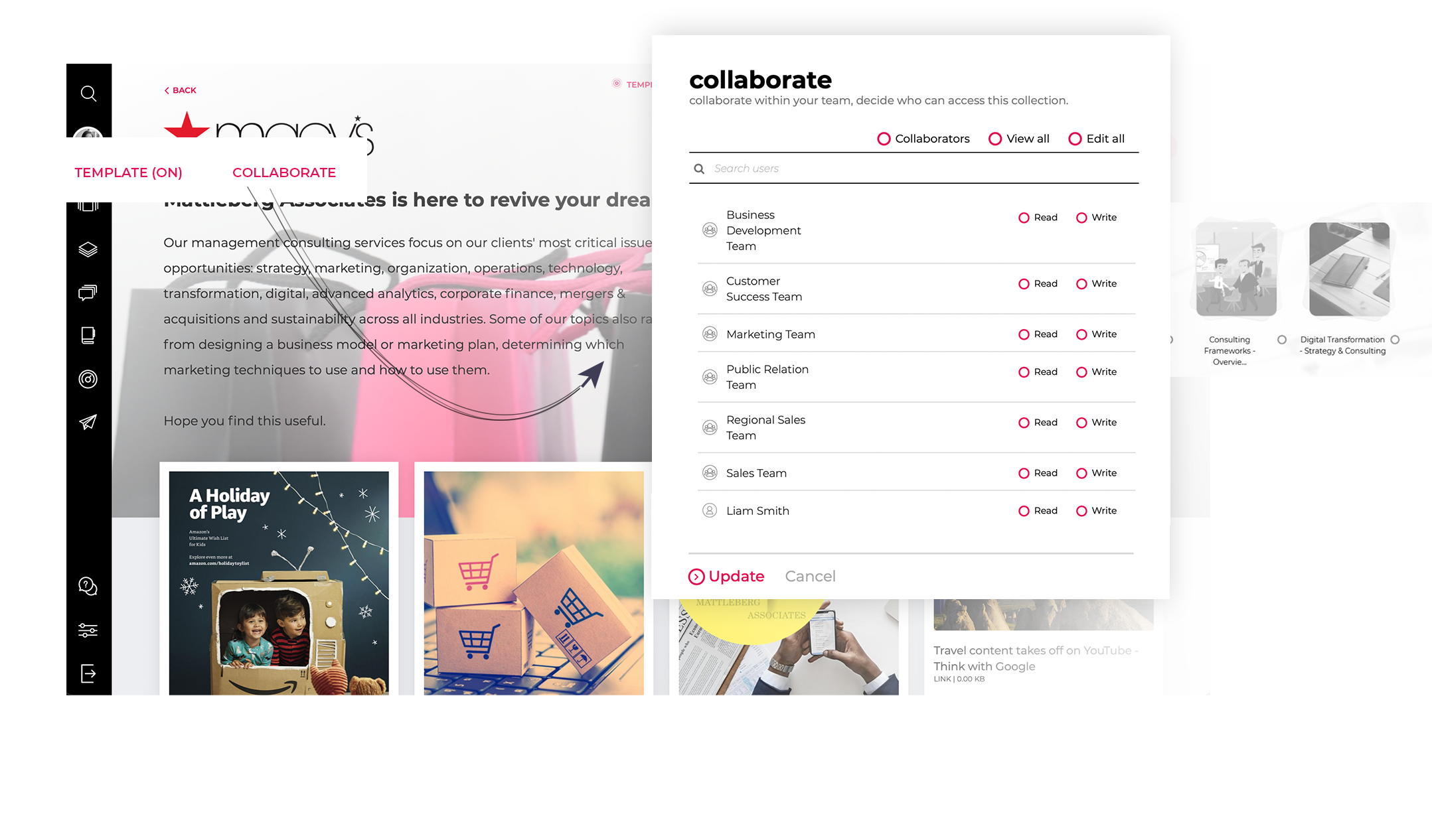Enterprise digital asset management: Everything you want to know
ENTERPRISE DAM BENEFITS, KEY FEATURES, AND HOW PAPERFLITE CAN HELP WITH YOUR ASSET LIBRARY NEEDS.
Digital asset management (DAM) is the process of organizing, storing, and sharing digital media assets such as images, videos, audio, documents, and other digital content. With the rise of digital media, the need to manage these assets has become increasingly important to businesses. Enterprise digital asset management (EDAM) is the process of managing these assets at scale. It helps organizations make the most of their digital media assets and maximize their return on investment.
What is Enterprise Digital Asset Management?

Enterprise digital asset management (DAM) is a system used to store, organize, and manage digital assets of an enterprise. This may include whitepapers, brochures, newsletters, audio files, and other digital content. DAM systems provide an enterprise with a centralized platform to store and manage their digital assets. This helps to ensure that digital assets are kept secure, organized, and up-to-date.
Why do People Need Enterprise Digital Asset Management?
In the digital age, companies generate vast amounts of digital content, including images, videos, presentations, and other types of digital assets. However, as the number of digital assets grows, it becomes increasingly difficult to manage, store, and access them. This is where enterprise digital asset management comes in - it helps companies to manage and organize their digital assets in a centralized, efficient, and secure manner.
One of the biggest advantages of enterprise digital asset management is that it helps companies to streamline their workflows and reduce the time spent on manual tasks. For example, instead of spending hours searching for the right images or videos, employees can access the digital assets they need in just a few clicks. This not only saves time but also increases productivity and improves the quality of work.
Another advantage of enterprise digital asset management is that it helps companies to ensure brand consistency across all digital channels. By providing employees with access to approved digital assets, companies can ensure that their brand is represented consistently, no matter where the content is used.
How Does DAM Work for an Enterprise?
DAM systems work by providing enterprises with an efficient way to store, organize, and manage their digital assets. This can include images, videos, documents, audio files, and other sales and marketing collaterals. The DAM system stores these digital assets in an organized and secure manner, allowing users to quickly and easily access the assets they need. Additionally, DAM systems enable users to share digital assets with others, track the usage of digital assets, and collaborate on projects.
Why is it Important to Manage Your Digital Assets?
Managing your digital assets is important for a number of reasons. First and foremost, managing your digital assets helps to ensure they are kept secure and organized. This helps to prevent unauthorized access to digital assets, as well as maintain their accuracy and quality. Additionally, managing digital assets helps to ensure that users are able to quickly and easily access the assets they need, when they need them.
Finally, managing digital assets helps to ensure that enterprises are able to track the usage of their digital assets, as well as collaborate on projects.
Also Read: Comprehensive Guide to Marketing Assets Management
Who Needs Enterprise Digital Asset Management?
Enterprise digital asset management is suitable for organizations of all sizes and industries. It is especially useful for businesses that rely heavily on digital media, such as marketing and advertising agencies, media and entertainment companies, and other creative organizations. It is also used by enterprise-level organizations that have a large number of digital assets, such as corporate or educational institutions.
Difference between Enterprise DAM and a CMS
A content management system (CMS) is a web-based application used to create, manage, and store digital content. A CMS is used to manage web content, such as blogs, articles, and other web pages. It is typically used by webmasters to edit, organize, and publish content to a website.
An enterprise digital asset management system, on the other hand, is used to manage digital assets such as images, videos, audio files, documents, and other digital content. It is used to organize, store, and share these assets across multiple departments and teams. It is used by businesses to streamline the management of their digital assets and to ensure compliance with copyright and other regulations.
The key features of an enterprise digital asset management system include:
1. Asset Storage:
Digital Asset Management (DAM) is a system of software and technology that allows organizations to store, manage, organize, and retrieve digital assets. This includes images, videos, audio, documents, sales and marketing assets. DAM technology also helps organizations to track rights, usage, and distribution of digital assets.
Let There Be No More Content Scavenger Hunting
2. Scalability:
Enterprise DAM systems are designed to be scalable, allowing organizations to add users, features, and content as their needs change.
3. Automation:
Enterprise DAM systems often include automation features such as automated workflows, metadata generation, and automated asset retrieval. This reduces the amount of manual labor required for asset management tasks.
4. Security:
Security is a major concern for enterprise DAM systems. These systems are often designed with robust security features such as user authentication, user rights management, and encryption.
5. Integration:

Enterprise DAM systems can be integrated with other systems, such as enterprise resource planning (ERP), customer relationship management (CRM), and enterprise content management (ECM) systems. This allows organizations to manage their digital assets in a unified way.
6. Analytics:

Enterprise DAM systems often include analytics features that allow organizations to track and analyze usage data for their digital assets. This can be used to gain insights into user behavior and optimize their digital asset management strategy.
Get Actionable Insights That Moves Sales Forward
7. Search:
Enterprise DAM systems provide powerful search capabilities that allow users to quickly and easily find the digital assets they need.
8. Collaboration:

Enterprise DAM systems provide tools that allow users to collaborate on digital assets. This includes features such as comments, tagging, and version control.
9. Accessibility:
Enterprise DAM systems are designed to be accessible from any device and any location, allowing users to access their digital assets wherever they are.
10. Support:
Many enterprise DAM systems provide customer support to help organizations with the implementation and maintenance of their systems.
11. Version control:
Ability to track versions of digital assets and keep them up-to-date.
12. Metadata management:
Ability to add metadata to assets for easier searching and retrieval.
Best Enterprise Digital Asset Management tools
There are many different enterprise digital asset management tools available on the market. Some of the best include Paperflite, Adobe Experience Manager, Widen Collective, Bynder, Canto, and OpenText Media Manager. Each of these tools offers a range of features and functionalities to help you manage your digital assets.
How brand asset management fits into your enterprise DAM strategy? Brand asset management is an important part of an enterprise DAM strategy. It involves managing digital assets related to your brand, such as logos, trademarks, and other corporate identity materials. It helps ensure that all of your digital assets are consistent with your brand identity and are used appropriately.
How Paperflite can solve your enterprise DAM needs
Paperflite is a cloud-based enterprise digital asset management platform. It offers a range of features to help you manage and share your digital assets. It has an intuitive user interface, making it easy to upload, store, and share digital assets. It also offers automated workflows, powerful search capabilities, and integrations with other systems.
Get Granular Information About Every Content Being Sent
Conclusion
Enterprise digital asset management is an essential part of any digital media strategy. It helps organizations make the most of their digital media assets and maximize their return on investment. There are many different enterprise DAM tools available on the market, each with their own set of features and functionalities. Paperflite is a cloud-based enterprise DAM platform
